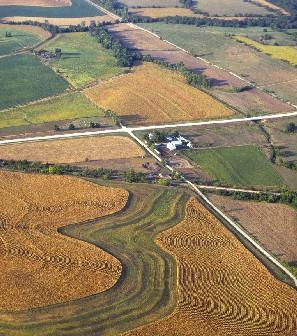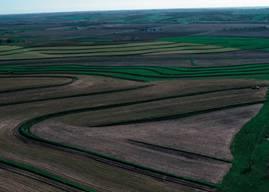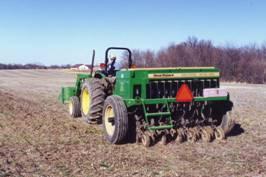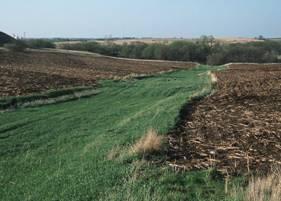
Establish a permanent vegetative cover to stabilize soil on land that is experiencing significant erosion.

Sheet, rill and gully erosion is the unwanted removal of soil from the land surface or through incised channels by the action of rainfall and runoff. Protecting the soil from runoff stops potential land degradation and assists with water quality protection.
The following state cost-share practices are designed to address this concern:
Details for each individual practice are available in the eligible practices chapter of the districts' Cost Share Handbook.
Establish a permanent vegetative cover to stabilize soil on land that is experiencing significant erosion.
Improve plant health and diversity by introducing legumes into established grass communities to protect soil on land that is experiencing significant erosion.

Reduce the erosive force of water by placing embankments to slow water runoff and increase water absorption on crop land that is experiencing significant erosion.
Control erosion and reduce or prevent pollution of land, water or air from agricultural nonpoint sources by directing rainwater to less sloping areas of the landscape and allowing it to dissipate or run off at a lower velocity, which encourages infiltration into the soil.
Establish a permanent vegetative cover on small critical areas such as gullies and steep banks to reduce erosion and protect water quality.
Establish a permanent vegetative cover on small critical areas associated to animal confinement areas.

This practice is an incentive payment to encourage farmers to use conservation no-till to reduce erosion on land that is experiencing significant erosion.
Reduce erosion with the placement of embankments on slopes to reduce the slope length and use underground piping to more quickly remove erosive water to a stable outlet from tracts that have experienced significant erosion.
Control erosion and protect water quality by constructing ponds to catch sediment and prevent it from leaving fields on land that is experiencing significant active erosion.
Temporarily retain water to control the release of runoff water and settle out the soil particles and nutrients. This practice is applicable to areas on farms where runoff of substantial amounts of sediment or runoff containing pesticides or fertilizers constitutes a significant pollution hazard.

Prevent or reduce existing erosion and pollution of water or land from agricultural nonpoint sources by using sod-forming grasses to protect soil within waterways to efficiently transport rainfall.
Reduce erosion and water pollution by establishing strips of permanent vegetative cover between crops, around hill slopes, and alternated downhill slopes.
Reduce erosion, improve water quality and soil health by planting cover crops.
Reduce the impacts of wind erosion and improve irrigation efficiency in cropland by establishing trees and shrubs at the edges of crop fields minimizing the impact of wind.
Stabilize the grade and control erosion in natural or artificial channels. Reduce and manage runoff and sedimentation entering drainage systems. Applicability of this practice is limited to Bollinger, Butler, Cape Girardeau, Dunklin, Mississippi, New Madrid, Pemiscot, Ripley, Scott, and Stoddard counties.
Reduce erosion and water pollution by implementing crop and vegetation rotations through systematic arrangements of equal-width strips across fields.
